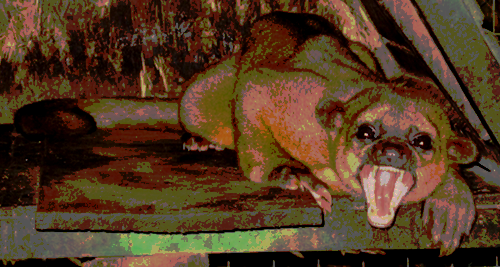
Welcome to Kinkatopia, a 501(c)3 nonprofit located in Boca Raton, Florida that takes in abandoned kinkajous and that has helped permanently rehome more than 120 kinkajous since 2018. On its website, Kinkatopia describes its mission:
. . . to advise people that kinkajous are not traditional pets. We are here to help those in captivity to live the best quality of lives. Through awareness and education, we can make a difference in these special animals’ lives, and share some smiles during the process.
They explain that only about 10-15% of kinkajous stay in the homes that originally acquire them, because most people are not equipped to properly take care of them. As a result, many kinkajous are rehomed multiple times. They advance explain:
For many, keeping exotic animals is something they rush into, infer they cannot commit fully to, or resolve they want to seek a more appropriate lifestyle for their animal. Many people then surrender their exotics to zoos, sanctuaries, the state, or other keepers. Most of these places are merely familiar with kinkajous, but not well-versed enough to furnish a quality life.
Sometimes owners even release their exotic animals into the wild, in an environment not suited for kinkajous. We see this happening in mostly texas and florida. These captive-raised animals are unable to care for themselves properly and suffer. They particularly do this with kinkajous, because kinks are overrepresented in the pet trade and underrepresented when it comes to accurate information. It is a tragic happening, and kinkatopia’s goal is to offer credible information on care taking as well as permanent sanctuary for these animals to live out their days.
Lamar University provides a great overview of the kinkajou, who also goes by the nickname “honey bear” because of its tan fur and its love for honey:
Kinkajous (Potos flavus) are nocturnal mammals native to the lowland rainforests of Central and South America. Their habitats range from eastern and southern Mexico through Belize and Costa Rica in Central America and down as far south as Ecuador and southern Brazil in South America. . .
The kinkajou belongs to the raccoon family and is directly related to the red panda that lives in China, the olingo, the civet and cacomistle, which are considered New World residents. Kinkajous have a rounded head, small ears, sharp teeth, a long body and soft thick brown fur. They are often referred to as a honey bear because of the yellowish brown color of its fur, but in Belize it is known as the “night walker.” The kinkajou has a long tail that helps to balance the animal and it is also used as a fifth hand so to speak to help in climbing. This animal also has a five-inch long tongue, which is used in reaching nectar and honey that otherwise may be out of achieve. Kinkajous have an excellent sense of touch and smell, but very poor vision. They cannot see color; they cannot sense differences in colors. With this poor vision the kinkajous rely heavily on their keen sense of touch and smell to avoid predation. As for communicating with each other the animals transmit by scent marking around where their homes are located and along where they travel. There are several scent glands located on their face, mouth, throat and abdomen. They also do vocal calling ranging from soft chirps to shrill screams (Myer).
Instead of acquiring a kinkajou, you can just look at cute videos of them online at Kinkatopia’s TikTok. It’s a win-win for everyone!

